Sumaya Mustofa
4IR Research Cell Daffodil International University, Dhaka, Bangladesh
A study on deep feature extraction to detect and classify Acute Lymphoblastic Leukemia (ALL)
Sep 10, 2024Abstract:Acute lymphoblastic leukaemia (ALL) is a blood malignancy that mainly affects adults and children. This study looks into the use of deep learning, specifically Convolutional Neural Networks (CNNs), for the detection and classification of ALL. Conventional techniques for ALL diagnosis, such bone marrow biopsy, are costly and prone to mistakes made by hand. By utilising automated technologies, the research seeks to improve diagnostic accuracy. The research uses a variety of pre-trained CNN models, such as InceptionV3, ResNet101, VGG19, DenseNet121, MobileNetV2, and DenseNet121, to extract characteristics from pictures of blood smears. ANOVA, Recursive Feature Elimination (RFE), Random Forest, Lasso, and Principal Component Analysis (PCA) are a few of the selection approaches used to find the most relevant features after feature extraction. Following that, machine learning methods like Na\"ive Bayes, Random Forest, Support Vector Machine (SVM), and K-Nearest Neighbours (KNN) are used to classify these features. With an 87% accuracy rate, the ResNet101 model produced the best results, closely followed by DenseNet121 and VGG19. According to the study, CNN-based models have the potential to decrease the need for medical specialists by increasing the speed and accuracy of ALL diagnosis. To improve model performance, the study also recommends expanding and diversifying datasets and investigating more sophisticated designs such as transformers. This study highlights how well automated deep learning systems do medical diagnosis.
A comprehensive study on Blood Cancer detection and classification using Convolutional Neural Network
Sep 10, 2024Abstract:Over the years in object detection several efficient Convolutional Neural Networks (CNN) networks, such as DenseNet201, InceptionV3, ResNet152v2, SEresNet152, VGG19, Xception gained significant attention due to their performance. Moreover, CNN paradigms have expanded to transfer learning and ensemble models from original CNN architectures. Research studies suggest that transfer learning and ensemble models are capable of increasing the accuracy of deep learning (DL) models. However, very few studies have conducted comprehensive experiments utilizing these techniques in detecting and localizing blood malignancies. Realizing the gap, this study conducted three experiments; in the first experiment -- six original CNNs were used, in the second experiment -- transfer learning and, in the third experiment a novel ensemble model DIX (DenseNet201, InceptionV3, and Xception) was developed to detect and classify blood cancer. The statistical result suggests that DIX outperformed the original and transfer learning performance, providing an accuracy of 99.12%. However, this study also provides a negative result in the case of transfer learning, as the transfer learning did not increase the accuracy of the original CNNs. Like many other cancers, blood cancer diseases require timely identification for effective treatment plans and increased survival possibilities. The high accuracy in detecting and categorization blood cancer detection using CNN suggests that the CNN model is promising in blood cancer disease detection. This research is significant in the fields of biomedical engineering, computer-aided disease diagnosis, and ML-based disease detection.
A study on Deep Convolutional Neural Networks, Transfer Learning and Ensemble Model for Breast Cancer Detection
Sep 10, 2024
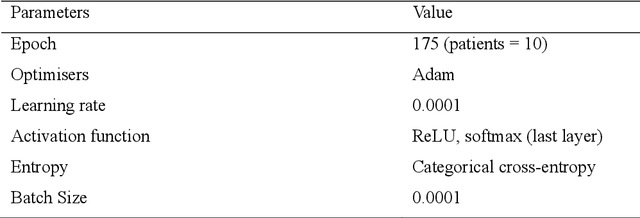

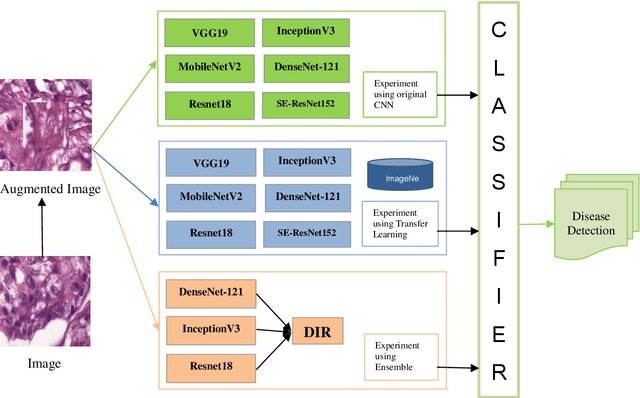
Abstract:In deep learning, transfer learning and ensemble models have shown promise in improving computer-aided disease diagnosis. However, applying the transfer learning and ensemble model is still relatively limited. Moreover, the ensemble model's development is ad-hoc, overlooks redundant layers, and suffers from imbalanced datasets and inadequate augmentation. Lastly, significant Deep Convolutional Neural Networks (D-CNNs) have been introduced to detect and classify breast cancer. Still, very few comparative studies were conducted to investigate the accuracy and efficiency of existing CNN architectures. Realising the gaps, this study compares the performance of D-CNN, which includes the original CNN, transfer learning, and an ensemble model, in detecting breast cancer. The comparison study of this paper consists of comparison using six CNN-based deep learning architectures (SE-ResNet152, MobileNetV2, VGG19, ResNet18, InceptionV3, and DenseNet-121), a transfer learning, and an ensemble model on breast cancer detection. Among the comparison of these models, the ensemble model provides the highest detection and classification accuracy of 99.94% for breast cancer detection and classification. However, this study also provides a negative result in the case of transfer learning, as the transfer learning did not increase the accuracy of the original SE-ResNet152, MobileNetV2, VGG19, ResNet18, InceptionV3, and DenseNet-121 model. The high accuracy in detecting and categorising breast cancer detection using CNN suggests that the CNN model is promising in breast cancer disease detection. This research is significant in biomedical engineering, computer-aided disease diagnosis, and ML-based disease detection.
A Semantic Segmentation Approach on Sweet Orange Leaf Diseases Detection Utilizing YOLO
Sep 10, 2024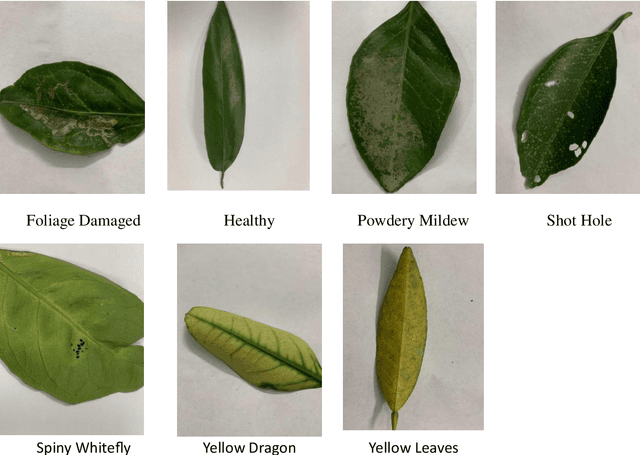
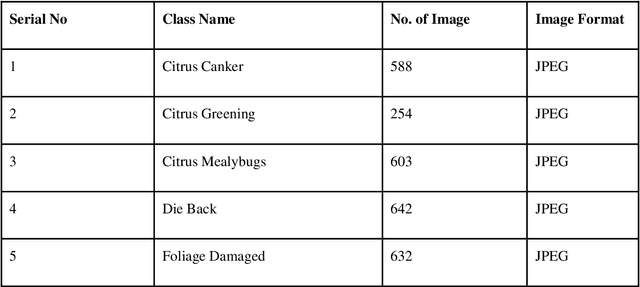
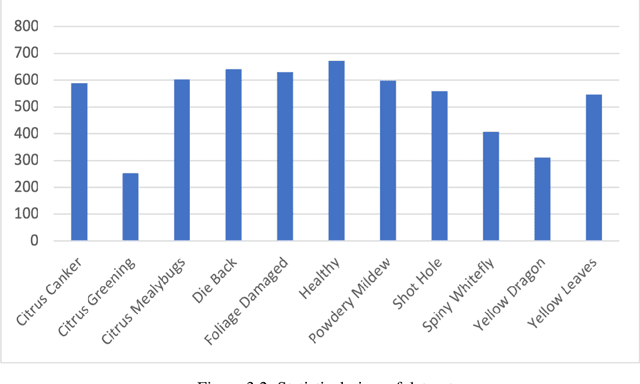
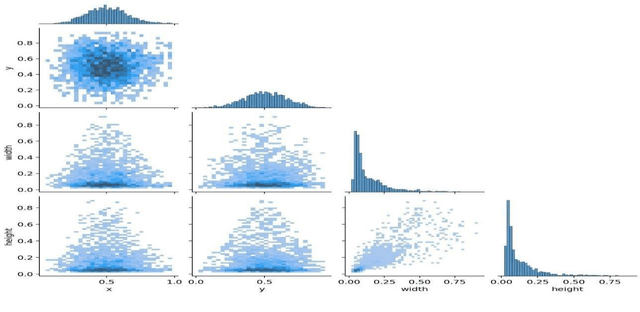
Abstract:This research introduces an advanced method for diagnosing diseases in sweet orange leaves by utilising advanced artificial intelligence models like YOLOv8 . Due to their significance as a vital agricultural product, sweet oranges encounter significant threats from a variety of diseases that harmfully affect both their yield and quality. Conventional methods for disease detection primarily depend on manual inspection which is ineffective and frequently leads to errors, resulting in delayed treatment and increased financial losses. In response to this challenge, the research utilized YOLOv8 , harnessing their proficiencies in detecting objects and analyzing images. YOLOv8 is recognized for its rapid and precise performance, while VIT is acknowledged for its detailed feature extraction abilities. Impressively, during both the training and validation stages, YOLOv8 exhibited a perfect accuracy of 80.4%, while VIT achieved an accuracy of 99.12%, showcasing their potential to transform disease detection in agriculture. The study comprehensively examined the practical challenges related to the implementation of AI technologies in agriculture, encompassing the computational demands and user accessibility, and offering viable solutions for broader usage. Moreover, it underscores the environmental considerations, particularly the potential for reduced pesticide usage, thereby promoting sustainable farming and environmental conservation. These findings provide encouraging insights into the application of AI in agriculture, suggesting a transition towards more effective, sustainable, and technologically advanced farming methods. This research not only highlights the efficacy of YOLOv8 within a specific agricultural domain but also lays the foundation for further studies that encompass a broader application in crop management and sustainable agricultural practices.
A comprehensive review on Plant Leaf Disease detection using Deep learning
Aug 27, 2023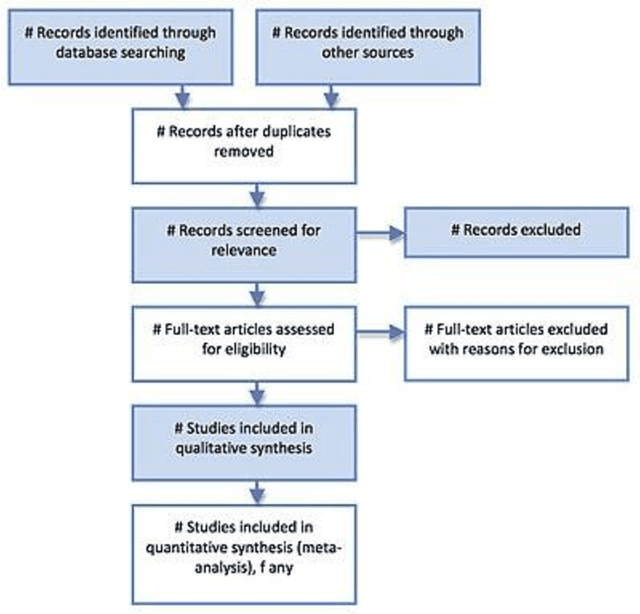
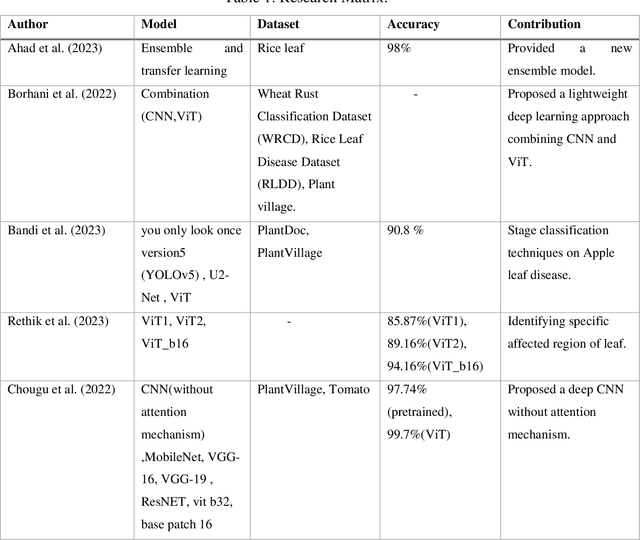
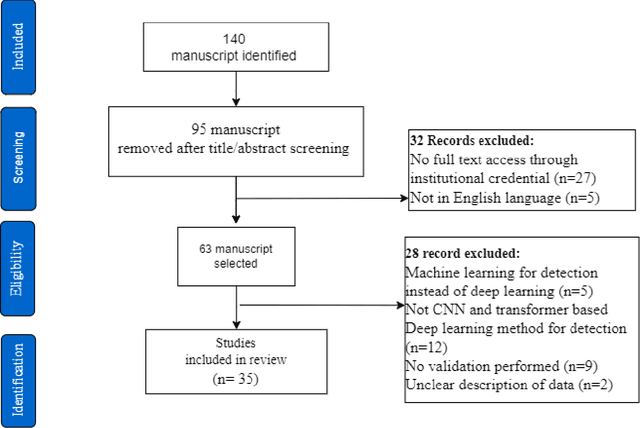
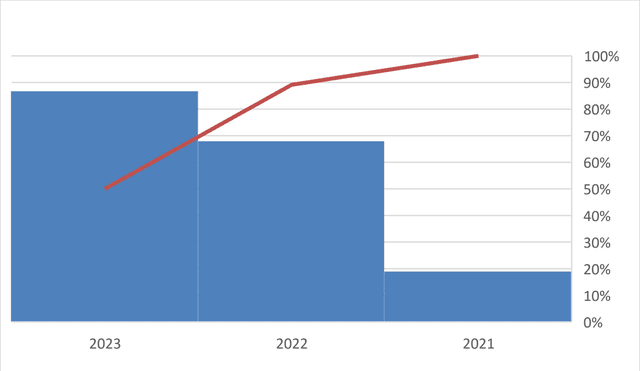
Abstract:Leaf disease is a common fatal disease for plants. Early diagnosis and detection is necessary in order to improve the prognosis of leaf diseases affecting plant. For predicting leaf disease, several automated systems have already been developed using different plant pathology imaging modalities. This paper provides a systematic review of the literature on leaf disease-based models for the diagnosis of various plant leaf diseases via deep learning. The advantages and limitations of different deep learning models including Vision Transformer (ViT), Deep convolutional neural network (DCNN), Convolutional neural network (CNN), Residual Skip Network-based Super-Resolution for Leaf Disease Detection (RSNSR-LDD), Disease Detection Network (DDN), and YOLO (You only look once) are described in this review. The review also shows that the studies related to leaf disease detection applied different deep learning models to a number of publicly available datasets. For comparing the performance of the models, different metrics such as accuracy, precision, recall, etc. were used in the existing studies.
 Add to Chrome
Add to Chrome Add to Firefox
Add to Firefox Add to Edge
Add to Edge